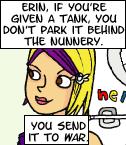iamspamus
Posts: 433
Joined: 11/16/2006
From: Cambridge, UK
Status: offline

|
Tarleton, good stuff! I like (civil) disagreement. It expands the mind.
I liked most of your post and agree with it.
I disagree on the corps issue. Most armies pre-Nap moved in groups, I concur. That is a better word than armies, though there was usually only one or two armies per country. However, a group is not a corps. Corps were specifically designed to be smaller units that were able to operate independently along simultaneous roads in a relatively sophisticated road network. They were made to be "little armies" which could hold out until the rest of the localized corps could show up to help them. Often these guys would show up in the rear or flanks of the opponent.
The French could do this style of fighting on the German plain and N Italy easily, but became more difficult the farther East, ie. away from civilization  you went. It broke down completely in Russia and E Prussia for instance. This was due to the poor road network and poor supply, necessitating more bulky supply lines. you went. It broke down completely in Russia and E Prussia for instance. This was due to the poor road network and poor supply, necessitating more bulky supply lines.
This was NOT the way of fighting pre-Nap. You may have groups or whatever terms you want to use, but they were not trained to cooperate and followed a strict supply line.
So, you can state that the system works earlier and I said that it does, but it's not an exact representation of the armies of the time. Just because there are groups (actually one cited group) that consists of the same number of units doesn't mean that the system models the time. It works fine, but works best for Nap period. As you stated before, it doesn't really work for post Nap/railroad times.
Jason
quote:
ORIGINAL: Tarleton
Marshall,
Yes, it used the original map.
Departing from neverman's admirable stance that I differ from, I think the work you designers have done splitting a few of the minors into smaller states actually enhances the potential for utilizing the editor to create various "home brew" pre-Napoleonic scenarios that were quite playable and very enjoyable.
I agree with your comments in another thread regarding the viability of utilizing the EiA "System" in the ACW. Eia is a game of Diplomacy with an abstracted combat system.
The system breaks down post 1815 as europe moves toward an age of industrialism where nationalism (ironically released by the French revolution) drives "winner take all" conflicts in Europe. National boundaries are more fixed. The case can be made theat post 1866, all conflicts would be Total Wars and not Limited wars.
Interestingly, EiA's approach to alliances and conflict (PP's as a currency, alliances and conflicts shifting, all wars limited in nature) are already beginning to end by 1805. Hence the French Large Corps system (fed by conscription...a signpost to a future age) and increased movement rates.
The religious wars (ideological wars..another "total war" era) are beginning to subside by the time of the Restoration in Great Britain in the 1660s and European politics enters a phase of Limited Conflict in the 1690s which continues until the end of the Napoleonic Wars. The phase, which includes the War of the Spanish Succession and the Great Northern War, the War of the Austrian Succession and the Seven Years War, and ends with the Naploeonic Wars, is perfectly suited to the EiA tratment.
I disagree with iamspamus regarding the Corps system. Armies moved in groups, just smaller ones, and they were not called Corps, per se, but the system works just fine. Take Frederick for example in the 1740 scenario:
Frederick the Great is a 354A.
The PR INF Corps have Strength maximums of 9I/M, 3C. Assuming 1,000 men per strength point, Frederick marches into battle with 48,000 men (about what he had with a full army). But coordination of the Army when "seperated" (outflanking) is difficult, so he has a 3 Strategic Rating.
In fact no leader of any nationality has a Corps maximum higher than a 4, and Frederick has the highest Strategic rating of them all with a 3. So Schwerin, for instance, would go into combat with 2 Corps, or 24,000 men.
The editor would need an option to allow chit combat with forces of 2 Corps or less.
Pat
|
 Printable Version
Printable Version










 you went. It broke down completely in Russia and E Prussia for instance. This was due to the poor road network and poor supply, necessitating more bulky supply lines.
you went. It broke down completely in Russia and E Prussia for instance. This was due to the poor road network and poor supply, necessitating more bulky supply lines.  New Messages
New Messages No New Messages
No New Messages Hot Topic w/ New Messages
Hot Topic w/ New Messages Hot Topic w/o New Messages
Hot Topic w/o New Messages Locked w/ New Messages
Locked w/ New Messages Locked w/o New Messages
Locked w/o New Messages Post New Thread
Post New Thread